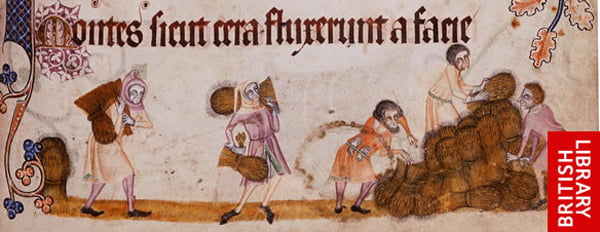By Laurent J. Cases
In a recent post on the FIFA corruption scandal and the attribution of the World Cup to Qatar, Yahoo columnist Dan Wetzel exposed the wrongs of Qatar’s labor practices, known as the kefala system. While his exposition is meant to highlight the fact that the United States should have attributed the 2022 World Cup, a fact that I do not dispute, he nonetheless rightly appalled that a migrant worker:
can live in labor camps that western media […] have exposed as wretched. The work is long and stressful. It takes place under extreme heat and with few safety precautions. The results are often fatal – illness, heart problems, sheer exhaustion killing some of these men. There are falls and accidents because labor laws are almost non-existent.
He concludes, and this is the problem, “The entire thing is reprehensible. It’s almost unfathomable […]. It’s something out of the Middle Ages.”
At the risk of nit-picking, it is shocking that one of the most objectionable practices from the contemporary Middle East should be lumped in with the mores of the Middle Ages. The imagined “Middle Ages” once again make an unsolicited appearance: this time, they arrive in an argument involving an institution that was founded in 1904, a billion-dollar sporting competition that first took place in 1930, and a work-system that began with increased western presence in the oil-rich countries of the Gulf in the 1920s, as Errichiello states. Nothing here is remotely medieval.
The kefala labor system functions by exploiting a cheap, migrant work force. Syed Ali summarizes the problem thus: “the kefala system essentially defines the bulk of the population as disposable and temporary.” This means that upon entry to the country, the migrant worker has his passport taken, and the end of his or her contract signifies expulsion from the country. This sort of impermanence is antithetical to most forms of work contracts in the Middle Ages. In fact, permanence is a very valuable commodity—for both contractor and employee—even in the case of serfdom.

For instance, take the case of a certain Duran Warin, who willfully submitted himself and his family to the monastery of Marmoutier in 1007. Upon doing so, he stipulated that no one should remove them from the lands of the St Martin abbey. He was not alone in this. A Dominique Barthélémy suggests, the donation of one’s person and “all future progeny” becomes common language in medieval charters. In fact, the monks at Marmoutier took the phenomenon even further. When Ohelm, a serf in charge of some property for the monks, showed himself to be rebellious, the monks nevertheless entrusted the property to his son Ascelin. The document, from around 1065, stipulates further that Ascelin’s progeny will serve as serfs for the monks. The contract between a lord and a serf was permanent; manumission was rarely granted, or even sought out.
Lords went to great length to ensure that serfs stayed within their demesnes. For instance, in 1230, Count Thibaut of Champagne stipulated that any serf who wished to reside in the nearby city of Troyes could only do so if he [Thibaut] should approve. This control of movement guaranteed that the workforce remained on a particular parcel of land.
A mutually-beneficial system
So far, it seems that only lords benefited from this arrangement. But this is not so. Travel in pre-modern societies was costly and often dangerous. Moving one’s family from area to area, or selling one’s services to various lords was risky. Banditry, if not totally rampant, was endemic. Furthermore, there was very little way to know whether a certain lord may or may not need the services you had to offer.
Merchants and craftsmen could be more mobile, but even then they were not free from risk. A letter from 1243 indicates that the Italian merchants travelling to Provins, in the County of Champagne, for the fair were robbed and forced to ransom themselves. For peasants or serf-administrators, serfdom guaranteed employment, food rations and security ensured by their lord.
Lastly, in some cases, settlement on a lord’s land could guarantee advantageous tax rates. In one instance, in the middle of the twelfth century, the lords of Champagne attempted to increase the population living on their lands. To do so, they created towns with certain privileges. So a resident might have a fixed tax rate along with being free from paying tolls within a Lord’s territory.
In this context, being a serf might also yield some important financial benefits. Thus, if a serf came into a Lord’s demesne, he came to stay.
That is not to say that there was no exploitation of the system. Some serfs must have been coerced into dependency, even if most were born into this category. Furthermore, laws guaranteed by one lord did not necessarily follow if there was a transfer of land to another lord or monastic community. That said, in some cases, the new lord agreed to continue the exemptions granted by the previous landowner, but this was not always the norm. In 1257, Count Thibaut V taxed all his subjects for three years with a special “one-hundredth” (1%) income tax. When issuing the tax, he promised that no further taxes will be levied either by himself or by his subjects. However, when ownership of the county reverted to the kingdom of France in 1284, King Philip IV issued a new tax on these lands. The guarantee by Thibaut—or similar ones made by other lords—were only partially corroborated by legal documents and, thus, were sometimes unenforceable (or ignored). Ultimately, this sort of dependence on personal relationships means that there was no uniformity from place to place. A serf may enjoy vastly more freedoms under one lord, fewer from another, or suffer under a third. Being legally attached to the land, but with no power to control the owner of said land, caused its own set of problems.
But, back to Qatar. Ultimately, if exploitation of the workforce by practices deemed unacceptable by modern standards is the sole reason to call the kefala system something “out of the Middle Ages”, then it is worth perhaps examining the work conditions of the more recent past. The factory scenes depicted in Upton Sinclair’s The Jungle, or even Dickens’ A Christmas Carol show similar scenes of abuse—even if Ebenezer Scrooge eventually has an epiphany.
The shameless exploitation of workers described by Dan Wetzel is not specific to the Middle Ages, but in many ways part of the evolution of the relationships between workers and employer. This is a continually evolving process. The kefala system in Qatar is a problem distinctly of our age, that we must grapple with as part of our way of life instead of calling it an anomaly from an imagined past.
Notes
* The bulk of the documentation comes from the documents edited by Theodore Evergates, in Feudal Society in Medieval France: Documents from the County of Champagne, University of Pennsylvania Press, 1993. This is done out of accessibility for both the reader and the writer. Other documents, edited and translated by Dominique Barthélémy in The Serf, The Knight and the Historian, Cornell University Press, 2009 were also used.
** Two references for the kefala system. Gennaro Errichiello, “Foreign Workforce in the Arab Gulf States (1930-1950): Migration Patters and Nationality Clause,” International Migration Review 46.2 (2012): 389-413. The polemic by Syed Ali, “Permanent Impermanence,” Contexts 9.2 (2010): 26-31. Useful is Andrew Gardner, “Rumour and Myth in the Labour Camps of Qatar,” Anthropology Today 6 (2012): 25-28, with relevant bibliography. An interesting article on general law of guarantees, Suhaimi ab Rahman, “The Influence of Classical Interpretation on the Law of Guarantees in the United Arab Emirates,” Arab Law Quarterly 4 (2008): 335-358.




